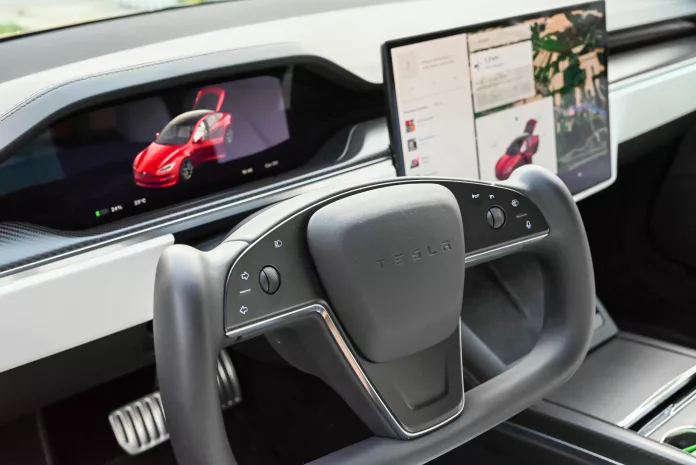Elon Musk’s vision for Tesla‘s Full Self-Driving (FSD) capability has been a journey of evolving promises and prices. Initially, as the technology progressed, the cost of FSD increased steadily, reaching up to $15,000. This pricing suggested an imminent arrival of complete automation, yet the actual development pace signaled a different story. With the advancement not arriving as quickly as anticipated, Tesla adjusted its strategy, reducing the FSD price tag to $12,000 and introducing a monthly subscription model at $199—only to halve that rate to $99 in recent developments.
Assessing the Value of Permanent FSD Ownership
With such pricing dynamics, the rationale behind owning the FSD feature permanently for $12,000 becomes questionable. Given today’s financial landscape marked by high interest rates, a $99 monthly fee accumulates to the $12,000 mark only after a decade. This timeline suggests that only long-term Tesla owners or those who can transfer their FSD to a new vehicle might truly benefit from the permanent purchase option.
Market Adjustments and Their Effects on Tesla Owners
In an effort to maintain demand, Tesla has significantly slashed vehicle prices. This move is a boon for new buyers but simultaneously depresses the resale value of existing Teslas, impacting current owners who wish to sell.
Improvements and Limitations of the FSD Supervised V12.3.3
Tesla’s latest FSD update, renamed from FSD Beta to FSD Supervised, brings substantial improvements in smoothness and navigational competence—particularly with handling complex driving scenarios like rotaries and speed bumps. Despite these advances, glaring issues persist, such as disregarding school zone speed limits and difficulty with some merging and turning maneuvers. These shortcomings hint at both the potential and the challenges that remain in achieving true automation.
Technological Evolution: A Long and Unpredictable Road
Reflecting on the broader historical context of innovation, technological milestones can either surge forward rapidly or trudge along sluggishly. Examples of rapid progression include the leap from slide rules to supercomputers, the envisioning of communication devices in comics to the advent of smartphones, and the transition from weeklong ship voyages to commonplace transatlantic flights within hours. Meanwhile, other areas, like battery technology and aerospace development, have advanced at a more gradual pace. With some dreams like every household owning a flying car still as distant as they were decades ago, it’s humbling to recognize the unpredictable nature of technological advancement.
The Upsides and Downsides of the Tesla FSD Supervised V12.3.3
Despite the ongoing hurdles, the latest iteration of Tesla’s FSD boasts remarkable capabilities such as adept handling of mountain roads without clear lane markings, intelligently slowing down for sharp turns and speed bumps, and deftly accommodating oncoming traffic, bicyclists, and pedestrians. Nevertheless, there remain issues to be ironed out, like the system’s inability to detect school zones and the tendency for phantom braking. Each update brings both progress and clear indicators of the work yet to be done.
Conclusion
The saga of Tesla’s FSD feature is a microcosm of technology’s broader trajectory, filled with promise, adaptations, and the persistent pursuit of a dream—the dream of autonomy. As Tesla tinkers with its pricing and refines its technology, the road to fully autonomous driving continues to stretch out before us, an ever-evolving horizon that keeps both automakers and drivers on a journey filled with anticipation and adaptation.


























